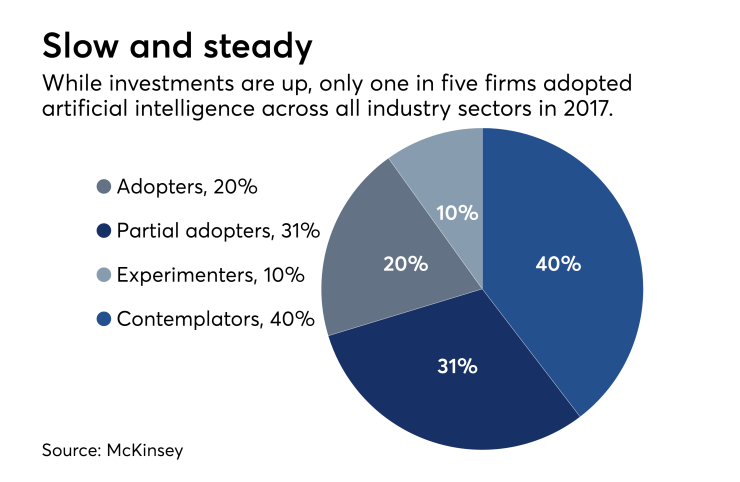Machine learning. Artificial intelligence. Bots that suggest investments to your clients in mere seconds. The future may sound a bit spooky for advisors worried about losing their jobs to automatons. The truth is, as complex digital tools become more practical, advisors will soon have to decide when and where to implement them, says American Banker editor-at-large Penny Crosman.
Pitfalls and misfires are bound to come with early adoption. How will advisors avoid missteps, while pioneering new technology? That’s what’s key, Crosman said at a SourceMedia webinar on Wednesday.
Striking the right balance between humans and technology is becoming the holy grail for advisory firms. What would have taken five to 10 minutes without technology, now can get done in a quarter of a second, she says.
HOW ADVISORS ARE USING AI
With the industry’s notoriously low success rate for new advisors, every second counts, says Jeff McMillan, chief analytics and data officer at Morgan Stanley. “Advisors come to work every day with many clients that all have unique needs and family situations,” he says. “In addition, they’re in a market that’s constantly changing.”
That’s where AI comes in. A new tool developed by Morgan Stanley takes large data sets about industry investment products and combines them with detailed client information — like life events and risk tolerances — to suggest the best investments in seconds. The tool then reaches out to the client via the appropriate media channel, whether that’s a text, email or phone call.

“It’s like having a Harvard grad on your team with 800 years of experience and looks at impacts at every financial event around the world, every day, and knows every client anniversary and sources all that information and applies it to your book,” McMillan says, adding that the tool works 24/7 to augment relationships with clients.
MACHINE LEARNING
What’s more, the tool bases future decisions on past client behavior. “We’re making mistakes every day and that’s okay,” McMillan says. “But, do you have a mechanism to know what’s moving the needle and what’s not?”
With a little help from robots, advisors can now become “hyper efficient” and do it at scale, he says.
“Firms that provide high-quality advice to their entire book of business — not just the top 15% — have the greatest opportunity for ongoing growth,” he says, adding that automation will drive the future of the advisor space for at least the next decade.
One thing firms will need is a large data set to get started. “We call them client genomes,” McMillan says. “You can’t get started without having thousands of data attributes. It goes beyond just male or female, and what their AUM is.”
THE ‘ROBOT OUT OF THE HUMAN’
Instead of introducing robots into the industry, digital tools are actually taking “the robot out of the human,” says Mark Shivers, head of robotic process automation at BNY Mellon.
“The new industrial revolution is here,” Shivers says, adding that the technology transforms manual laborers into skilled workers. “There’s less emphasis on screwing a nut and a bolt together and more about data-centric jobs — jobs that can be more cognitive.”
He describes a new program at BNY Mellon, which automates repetitive processes like account closures and fund transfers. In some cases, transaction times were reduced from 13 minutes with a human advisor, to under a minute with the new bots. Those efficiency gains give advisors more time to focus on customer needs, Shivers says.
Ultimately, McMillan measures customer engagement — and the new assets under management that comes with it — to evaluate a new tool’s success. “That’s the ultimate vote of confidence,” he says.





